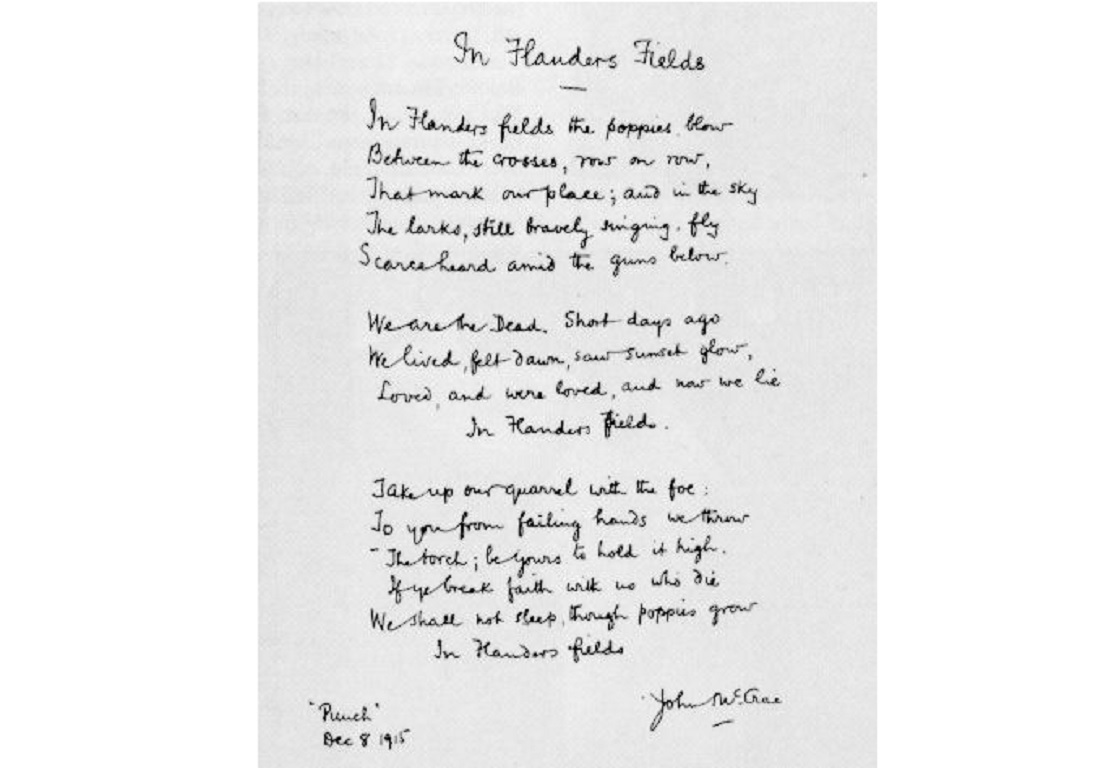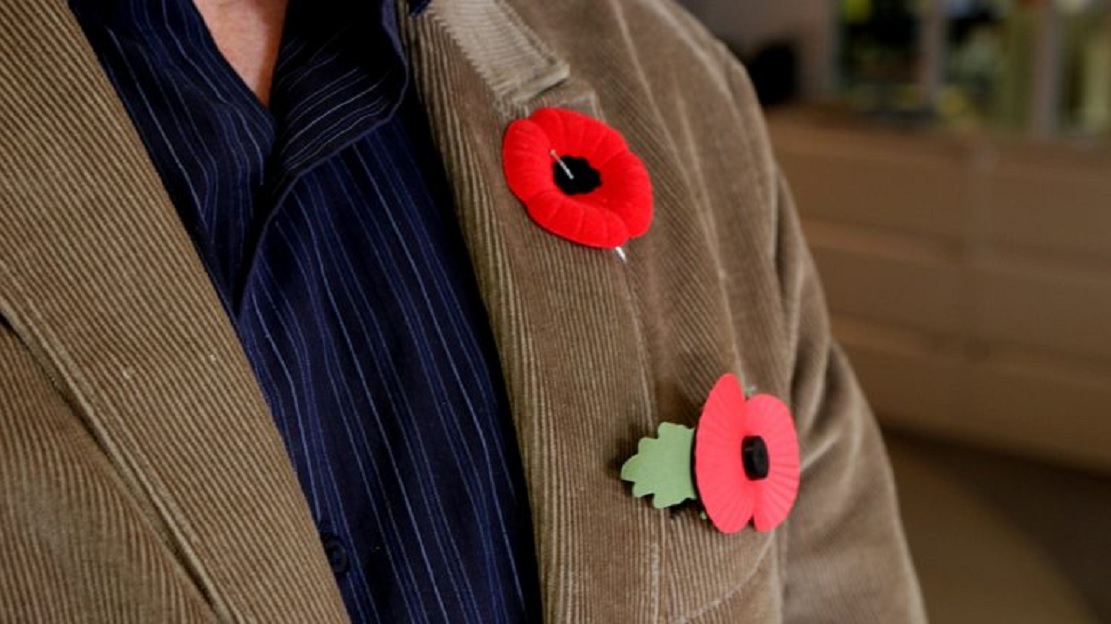On November 11, at the 11th hour, Canada, and many places around the world will hold ceremonies to commemorate the Armistice of the First World War when the guns were finally silenced. Services, held annually in Canada since 1931, now also remember the sacrifice of all those in fell in subsequent wars, conflicts and peacekeeping.
Now widely adopted, especially in Commonwealth countries. the widely recognised symbol of ‘remembrance’ began with a death on the battlefield, one of hundreds of thousands in the slaughter of the Western Front in the First World War.
Near Ypres, in May 1915 ,a young Canadian soldier was killed by an artillery shell, Lt. Alexis Helmer. He was a former medical student and friend of Lt.Col John McCrae, a surgeon working at the front in a dressing station near the Yser Canal.
Deeply dismayed, McCrae, in an all too brief moment of respite, scribbled a short poem.
The thousands of shells falling on the battlefields of Flanders had churned up the soil and while all other trees and vegetation had been blasted into a brown mud, the fresh mix of lime and chalk which had been lying below the surface promoted the growth of bright red poppies. Many soldiers has seen the blooming red poppies as symbols of the blood spilled by their comrades, in fact a phenomenon noted in the region as far back as the Napoleonic wars.
McCrae wrote of the poppies incongruity of the blooming life amid so much death. adding his call to continue the fight towards victory to end the war and to not forget the sacrifice of the dead.

McCrae’s poem “In Flanders Fields”. He would make several copies for friends so it’s not certain if any images on the net are of the original ( National Archives Canada C-128809)
Several months later the poem would be published in the popular Punch Magazine, becoming one of the most popular poems of the war.
Far away in New York City and years later, an American professor, Moina Michael, who had been working at the YMCA Overseas War Secretaries headquarters, came across the poem shortly before the Armistice in November 1918. Deeply moved she vowed to wear a poppy as a sign that the dead would not be forgotten. She began a campaign to get the poppy adopted as an international symbol of remembrance.
In 1920 during an international meeting of YMCA secretaries, a visiting French woman learned of the proposal. Madame Guerin had also been using the poppy in her efforts in France to support children destitute because of the war.
The American Legion invited her to speak about her campaign and were favourable to adopting the policy which she had labelled, the “Inter-Allied Poppy Day”.
She than travelled and gave speeches In Canada. The Great War Veterans Association (later Royal Canadian Legion) also saw merit in the McCrae inspired concept and adopted the poppy as the official Flower of Remembrance on July 5, 1921 becoming the first veterans in the British Empire to do so.

The ‘four segment’ Canadian poppy thin plastic with an imitation velour-like finish and straight pin and below, the British poppy a ‘two-segment’ paper version with added leaf and plastic stem. (courtesy Peter Henry Ashcroft( Photo-Marie Claude Simard)
Upon returning to France began the effort of handmaking poppy replicas in silk as a fund raising effort to help the destitute children in her war-torn country. First though she met with Earl Haig founder of the Royal British Legion who saw merit in the idea and in 1921 ordered millions of poppies to raise funds for veterans and their families to be sold prior to that years commemoration of the Armistice
A similar situation occurred in Australia where the Australian Returned Soldiers and Saliors Imperial League ( later RSL) imported a million of the French silk poppies in 1921 for its Armistice commemoration. Since then the poppy is also becoming more common during ANZAC day commemorations as well.
Perhaps strangely, the one ‘Allied’ country where the tradition has not caught on to nearlythe same extent, is the United States where the idea was actually initially promoted.
This year because of COVID, massed commemoration ceremonies such as that at the National War Memorial in Ottawa, will be greatly reduced. Ceremonies will be carried on TV, while others will be ‘virtual’ to allow participation from home.
The Commonwealth War Graves Commission in Canada will also hold a special event on social media called #ShineOn in which they can share memories about fallen family members or friends.
At 7 pm (Eastern) the CWGC will shine searchlights into the sky at key locations inviting Canadians to look up to the stars and remember the fallen.
additional information-sources
- Wartime Poetry Canada-
- .RCI: Nov 2/18: Remembrance 100: Sacrifices of war but do Canadians know? (plus links)
- RCI: Oct 28/18:Remembrance: Poppy campaign begins ( plus links)
- RCI: Nov 4/17: Remembrance week: A monument to those who served in Afghanistan (interview)
- RCI: Nov 6/17: Remembrance week;100 years- the blood-soaked fields of Flanders (plus links)







For reasons beyond our control, and for an undetermined period of time, our comment section is now closed. However, our social networks remain open to your contributions.